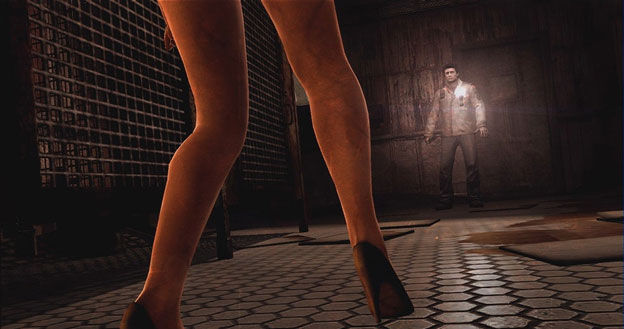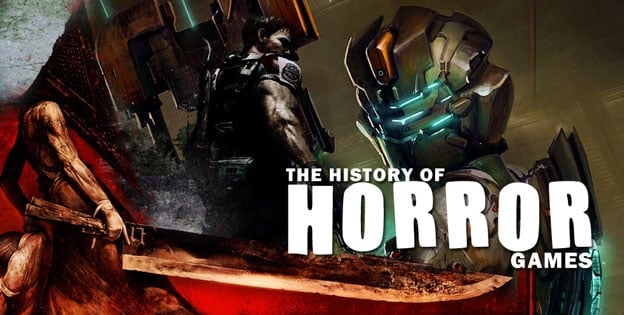The History Of Horror Games
Was that a scream you just heard in the distance? Did that shadow move or are the lights merely playing tricks on you? Is there something lurking in the fog or around that corner? If you’ve played a horror game before, there’s a very good chance you’ve asked yourself these questions at some point. Of all the genres out there, from fantasy RPGs to modern warfare shooters and everything in between, survival horror is unique because it can awaken our most basic of animal instincts: fight or flight. The normal reaction to some twisted creature jumping out at you is to run, and when you’re low on ammo and health that’s usually the only way to survive. But how did it start, and more importantly, how did it become the more action-oriented genre we see today?
Resident Evil gets much of the attention since it coined the term in 1996, but “survival horror” actually started seven years earlier with Capcom’s first stab at the genre: Sweet Home. Resident Evil was originally supposed to be a remake of that game before becoming the game that spawned the most successful survival horror series in history and one of the best-selling video game franchises of all time. Sweet Home and Resident Evil share quite a few similarities: they both take place in a mansion filled with many terrifying creatures, and they share the iconic slowly opening door loading screen, difficult puzzles, item inventory managements, and, of course, and emphasis on survival. For its time, Sweet Home was a revolutionary game, and its legacy didn’t just inspire Resident Evil, it also set the foundation for what would later become the survival horror genre.
A few years later, Alone in the Dark took everything to a whole new level. This game brought with it static cameras and three-dimensional characters rendered on 3D backgrounds, features that would make their way to Resident Evil four years later. Alone in the Dark also had a focus on a very mature story and completing puzzles as opposed to fighting your way through waves of enemies to progress the story. Its atmosphere was always thick with dread, and you never knew what was waiting for you just out of sight of the fixed cameras. It was terrifying. Until 1996, that is.

March of 1996 brought us the first game in the renowned zombie-infested franchise, Resident Evil. The fixed cameras, terrifying creatures, item conservation, and atmosphere thick with dread were all there alongside live-action cut-scenes, a ton of unlockable content, and plenty of unforgettable moments. Over the next couple games, Capcom continued evolving the franchise, adding new characters, iconic enemies like the Nemesis, and expanding the fiction with each new game. Meanwhile, a few new contenders were entering the ring.
Capitalizing on Resident Evil’s success was a handful of games that took what Capcom’s game did while adding their own twists. 1997’s The Note, which never released in the States, shared some similarities with Resident Evil, only it was one of the first horror games to use a fully 3D environment. Hellnight (1998) was a first-person game, only you had no means of fighting. Even Clock Tower 2 (1998) jumped on the Resident Evil bandwagon, replacing the stealth-centric gameplay the original favored for more action. And as Resident Evil 2 infected store shelves, so did Parasite Eve. This game was unique because it offered many of the more traditional elements of the survival horror genre but with a distinctive RPG flavor, similar in style to Final Fantasy.
The following year brought gamers an entirely new and terrifying experience with Silent Hill. Instead of lots of guns and frenetic action sequences, Silent Hill favored a more atmospheric approach to the survival horror genre. The game focused on its unique cast of characters, its even more original arsenal of disturbing enemies, and a beautifully realized and completely unpredictable world of fog and horror. Silent Hill marked a return to what made the genre so terrifying in the first place, since you couldn’t see very far ahead of you and you knew something awful was drawing close when your radio started going off. Add to that a genuinely engrossing story, the terrifying Otherworld that you were thrown into without warning, and a haunting soundtrack by composer Akira Yamaoka, and Silent Hill was destined to be the beginning of an incredible franchise.
Despite the common opinion that the time around Silent Hill’s release was the pinnacle of the survival horror genre’s reign, there were still plenty of games to come after it that were just as memorable. The first of which would be Fatal Frame in 2001. This game was especially terrifying because you couldn’t hide from the enemies like in Silent Hill, and you didn’t have a gun to keep them at a distance like in Resident Evil. Instead, you had the Camera Obscura, your only weapon against the spirits that wanted you dead. This unique take on defending yourself, and a more psychological type of horror (like Silent Hill), made the game an instant hit.

Over the next handful of years, Capcom experimented with adding more action to the Resident Evil series; Survivor and Dead Aim from 2000 and 2003 respectively both focused on gunplay over anything else. Clock Tower 3 also took its series far from the path tread by previous installments, removing the stealth element altogether and replacing it with more action and combat, though some puzzle solving and exploration still remained. Midway through the decade, it seemed gamers were getting tired of the staples of the survival horror genre, like item conservation, clunky controls, and unforgiving puzzles. Then in 2005, Capcom turned everything upside-down.
- Page 1
- Page 2
